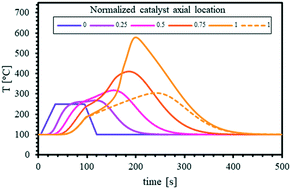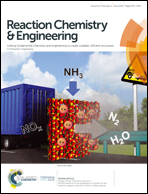Simulation of exotherms from the oxidation of accumulated carbonaceous species over a VSCR catalyst
Abstract
Vanadium based SCR (VSCR) catalysts are widely used for NOx reduction in diesel aftertreatment applications. However, HC species present in engine exhaust can lead to the accumulation of carbonaceous species (CS) over VSCR catalysts, especially under low temperature conditions. In addition to CS blocking VSCR active sites which results in decreased NOx conversion, the sudden burn-off of accumulated CS on VSCR can also lead to strong exotherms due to its high energy content. This work investigates the exotherms generated by accumulated CS from a theoretical perspective. First, temperature programmed oxidation (TPO) experiments are used to characterize CS oxidation kinetics. A mathematical model describing exotherms resulting from the oxidation of accumulated CS is then built and used to quantitatively describe the effects of diesel engine operating conditions and CS oxidation characteristics on exotherms. The results reveal that higher CS loading, lower space velocity and higher temperature ramping rate lead to more severe exotherms, while the reactivity of the CS also plays a critical role in the behavior of the exotherm. Finally, a drop to idle event is simulated to demonstrate an exotherm under transient operating conditions to reveal the combination of the various effects.

- This article is part of the themed collection: Selective catalytic reduction of NOx


 Please wait while we load your content...
Please wait while we load your content...